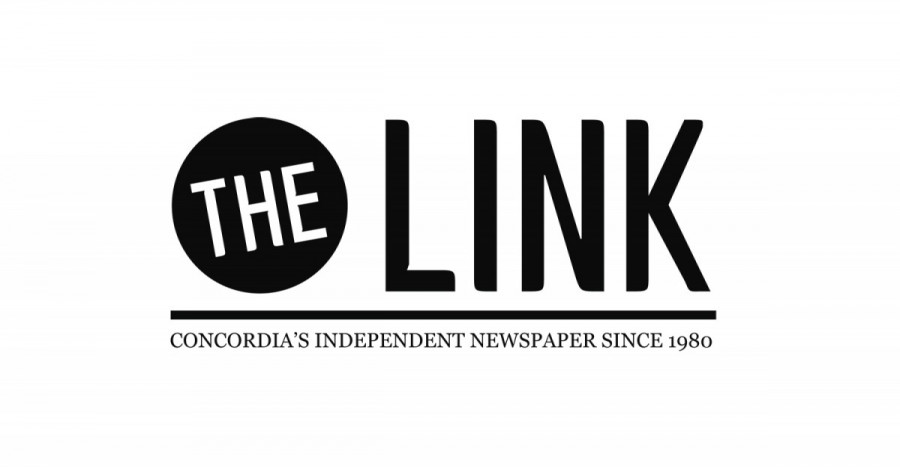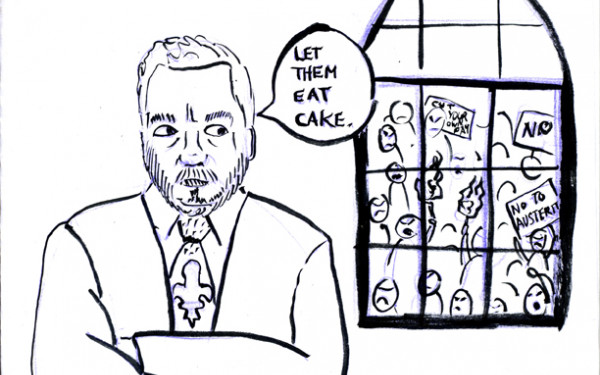Deconstructing the Supposed Need For Austerity
Economist Jim Stanford on Canada’s Deficit and Free Post-Secondary Education
The belt-tightening ideology of austerity invoked by governments around the world to slash budgets “is more about politics than economics,” according to economist Jim Stanford, who was the guest of the Teaching and Research Assistants at Concordia union on Nov. 19.
Austerity, Stanford told a crowd of about 20 people, “is the response of the rich and powerful in society” to the effects of a 2008 financial crisis that they themselves caused through “the hyperactive, greed-driven activity of a deregulated private sector industry.”
In other words, Stanford said, workers and pensioners are being asked to make do with less because of “people with money who were allowed to play with money without adult supervision.”
Stanford is an economist with Unifor, a new nation-wide union formed in August of this year through the merger of the Canadian Auto Workers and the Communication, Energy and Paperworkers Union of Canada. He is also a commentator on CBC News and a columnist for The Globe and Mail.
Budgets are about social choices, Stanford told his audience. He said that if the federal government got 2 million non-employed Canadians—either unemployed individuals actively looking for jobs or potential workers not currently seeking employment—back to work or raised the country’s relatively low corporate tax rates, enough new revenue would be generated to take care of the deficit and fund projects like expanded public transit, a green energy strategy or free post-secondary education.
Stanford added, however, that it’s perfectly acceptable for governments to run a deficit while putting people back to work and investing in important long-term projects.
“If you try to balance the budget during a recession, you actually make the recession worse,” he said, offering Greece as an example. “You can actually have a deficit year after year after year, even in good years, as long as your economy is growing.”
Stanford said that current deficits are caused by government tax cuts for rich investors.
“[They] create the deficit by cutting taxes, and then [they] try to justify spending cuts to go along with it,” he said.
In his presentation, Stanford referred to economics as “the dismal science,” founded on the idea of scarcity. This has given rise to the contemporary ideology of austerity, he said, “which is more of a political project than an economic analysis.”
The reality, according to him, is that there is no scarcity of money, capital, revenue or skilled labour.
“We’re capable as a society of producing more goods and services than we ever have,” he argued. “We should be expecting more in terms of quality of life than we ever have.”
Some members of the audience were critical of Stanford for not going far enough in addressing what they consider to be the damaging social and ecological effects of capitalism.
One of these critics was Beverley Best, an associate professor in Concordia’s Department of Sociology and Anthropology, who disagreed with Stanford’s focus on “putting people back to work,” and said that “a deeper shift is required that does question the free-market model.”
Stanford replied that capitalism can be changed and that it works better in some countries than in others.
“I reject the idea that says, ‘Capitalism is capitalism, there’s nothing you can do about it and you have to just get rid of it,’” he said.
Capitalism can be improved through more government intervention, Stanford continued, and by challenging “the leading role that is currently given to private, for-profit investors.”
For TRAC President Adam Szymanski, the most important thing for people to take away from Stanford’s presentation is the possibility of free post-secondary education.
“We really want to keep free education on the political agenda,” Szymanski told The Link.
Speaking with The Link after his presentation, Stanford urged economics students not to limit themselves to “a supply-and-demand vision of the world that does not even describe what the world is like, let alone what it could become.”
Instead, he urged students to “educate yourself about the alternative ideas and theories and arguments that are out there, and try to connect what you’re learning to the real world problems that are around us.”


_600_832_s.png)

_600_375_90_s_c1.jpg)


